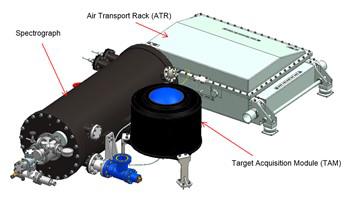Lead Organisation: University of Leicester
Project Lead: Hartmut Boesch
Partners: STFC UK ATC, STFC RAL Space & University of Edinburgh

The Tropical Carbon Mission (TCM) concept proposes to address key science challenges of current carbon cycle research by collecting targeted data that will reduce the uncertainties in the tropical carbon budgets, and thus will allow determination with confidence if the tropics are a net source or sink of CO2. The TCM concept has matured significantly by virtue of recent CEOI funding, cumulative experience with the Green House gas Observations of the Stratosphere and Troposphere (GHOST) spectrometer, and recent key science innovations associated with aerosol characterization using a multi-view approach. In this project, airborne demonstrations were used to establish the GHOST instrument technology as TRL 6 and raise the SRL of the multi-view spectroscopy of CO2 to SRL 5. Multi-view measurements were achieved from the airborne demonstration by using an existing pointing system combined with a RAL-calibrated, optically upgraded version of GHOST. The TCM mission uses an innovative multi-view approach for accurate CO2 measurements in the tropics.

The project identified and addressed an existing instrument artefact in the depolariser that included a small air gap between two optical elements. This was replaced this with a new OTS micro-retarder depolariser array, which eliminated the residual spectral oscillations.
An extensive calibration before the deployment helped to characterise key instrument parameters which showed that the instrument meets at least the threshold requirements and, in many cases, exceeds the goal requirements. It also revealed a significant influence of stray light on the spectral bands. The team proposed a solution to the stray light issue as a future activity.
The team successfully acquired multi-view measurements with GHOST which have been analysed with retrieval methods and the vertical sensitivity to aerosols for different viewing directions has been investigated. However, the added value of multiple views from the acquired data was not proven, due to several potential limitations such as straylight and low signal-to-noise in band 1. It is evident that a multi-view approach will impose strict performance requirements on the instrument.
The retrieval of CO2 and CH4 from the calibrated GHOST Band 2A spectra showed that the new polarisation unit has effectively eliminated spectral oscillations that have been observed in previous deployments. From an analysis of the CO2 and CH4 ratios for an overpass over Grangemouth a scatter of the CH4/CO2 ratio of 1-2 %, was identified which is larger than expected.
The retrieval of the aerosol profile information from measurement taken across a range of viewing angles uses GHOST Band 1, which incorporates oxygen absorption at wavelengths around 1.27 microns. From the retrievals, retrieved aerosol parameters show no clear dependence on the viewing angle but larger scatter is observed for larger elevation angle. This is confirmed by the vertical error profile of aerosol extinction and the profile aerosol averaging kernels which do not show a consistent trend with elevation angle.
